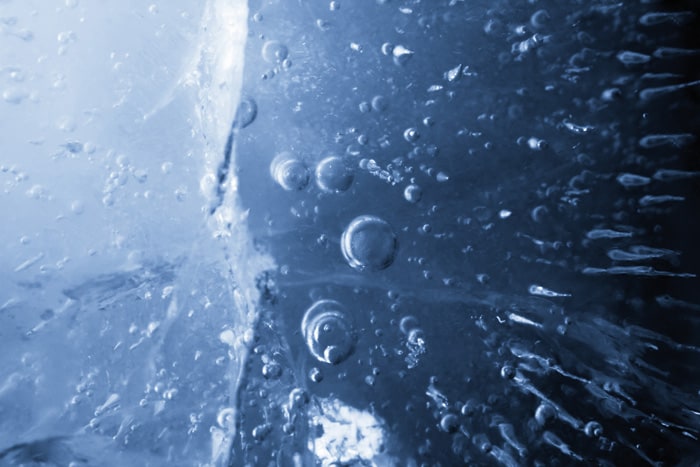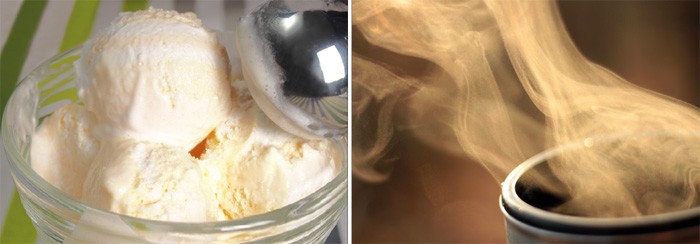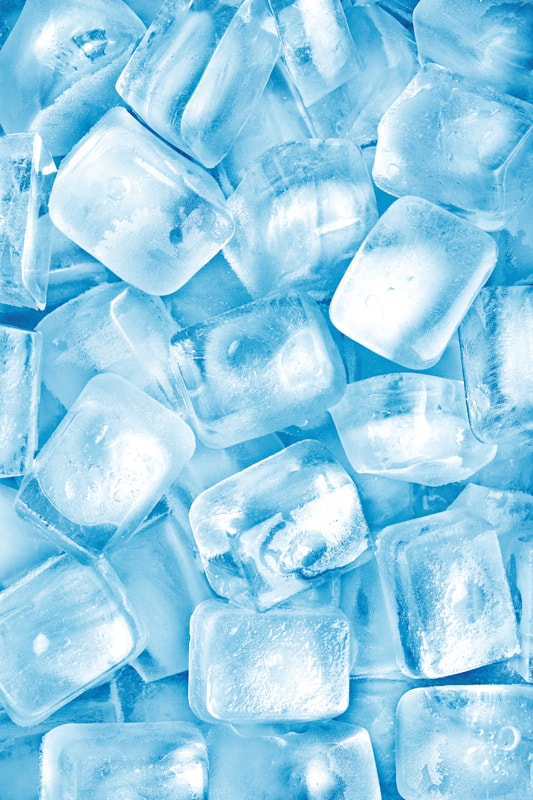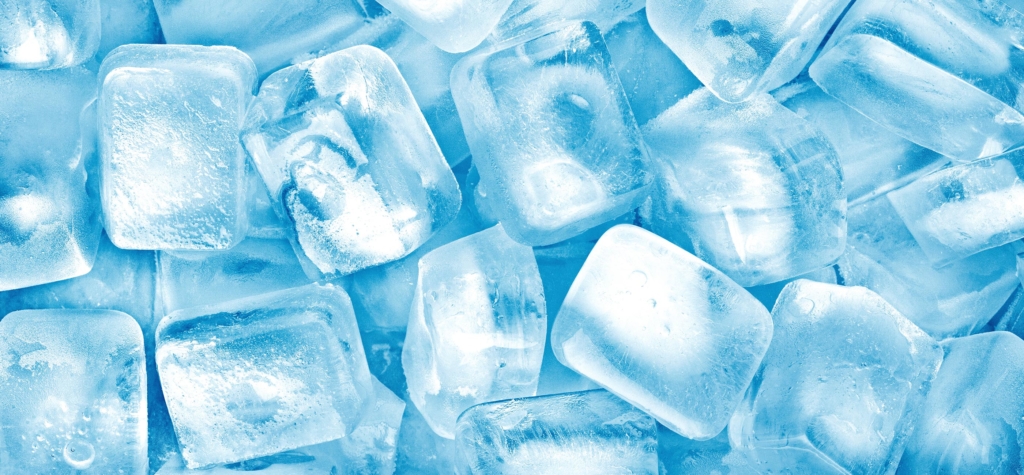Does hot water really freeze faster than cold? Jennifer Ouellette describes what could be a new theoretical understanding for the so-called Mpemba effect – and why it predicts that cold water could even heat up faster than warm water
The food’s ready. The drinks are in the fridge. You’re all set for a fabulous festive party. Damn! You’ve got no ice cubes and the guests are due in a couple of hours. You sprint to your local convenience store, but it’s clean out of party bags of ice cubes. Not to panic: you’re a physicist and have heard of the “Mpemba effect” – that hot water freezes faster than lukewarm or cool water. So you fill your ice-cube tray from the hot tap and place it in the freezer. Panic over. Or is it?
Scientists are still not clear about the precise mechanisms behind this counter-intuitive phenomenon – or even if the Mpemba effect exists at all, since it’s proven maddeningly difficult to reproduce consistently. In the latest twist, two physicists have mapped out a generalized theoretical framework for how such an unusual event might occur in simple systems. “The Mpemba effect is not something special to water,” says Oren Raz of the Weizmann Institute of Science in Israel, who developed the theory with Zhiyue Lu from the University of Chicago in the US (PNAS 114 5083). “There should be different systems with essentially the same effect.”
Raz and Lu’s theory also predicts an inverse Mpemba effect: that under certain conditions, a colder system could heat up faster than a warm one. If true, it would be welcome news for those who believe cold water boils faster than warm or hot water, which has been largely dismissed to date as a scientific myth. Their work has also inspired scientists from Spain to devise their own theoretical model showing that the Mpemba effect could occur in granular fluid consisting of spheres suspended in a liquid.
Challenging convention
The notion that hot water freezes faster than cold is named after Erasto Mpemba. In 1963, while he was a schoolboy in Tanzania, he noticed that his home-made ice cream froze faster than his schoolmates’ batches if he didn’t cool the boiled milk before placing it in the freezer. In fact, not cooling their milk before freezing was common practice among local ice-cream vendors at the time. But Mpemba’s observation didn’t tally with what he’d been told about Newton’s law of cooling, which says that the rate at which a body cools is proportional to the difference in temperature between that body and its environment.

The young Mpemba challenged his teacher to explain his observation, and was roundly ridiculed for his trouble (the teacher sarcastically dismissing it as “Mpemba’s physics”). But when Denis Osborne, a physicist at University College Dar es Salaam, visited Mpemba’s school, the boy posed the same question. Osborne promised to try the experiment when he returned to his university. Personally, he thought the boy was mistaken, but felt no question should be ridiculed, and conceded there might be other unknown factors affecting the rate of cooling. Much to Osborne’s surprise, the experiments worked and he ended up co-authoring a paper with Mpemba in 1969 (Phys. Ed. 4 172).
The Mpemba effect has been a staple of DIY educational home experiments ever since, but he was not the first to notice it. Around 350 BC Aristotle observed that it was local custom to put water in the Sun first if one wanted the liquid to cool more quickly. Roger Bacon and (four centuries later) Francis Bacon also argued for the existence of such an effect, as did René Descartes. And over the last 10–15 years, scientists have been looking more closely at the Mpemba effect, hoping to tease out the precise causes of such a counter-intuitive phenomenon. The Royal Society of Chemistry even sponsored a competition in 2012, inviting scientists from around the world to proffer their explanations; yet none of the more than 20,000 papers submitted yielded a broad consensus.
Rival explanations One of the most common explanations put forward by scientists over the years centres on the influence of convective heat transfer, in which water forms convection currents as it heats, transferring hot liquid to the surface, where it evaporates. As a result of this effect, an open cup with hot water would evaporate more quickly than a similar vessel with cool water, with the remaining liquid therefore freezing faster. But this would limit the effect to open-topped vessels, and some experiments have observed the effect in closed vessels too.
Supercooling – where water can remain a liquid at well below its usual freezing point – may also be involved, provided that the water is sufficiently free of impurities, which otherwise help liquids crystallize into a solid. Indeed, in 1995 David Auerbach – a physicist then at the Max Planck Institute for Fluid Dynamics in Göttingen, Germany – carried out experiments that suggested that cold water will supercool to a lower temperature than hot water (Am. J. Phys. 63 882). His experiments revealed that the Mpemba effect occurs when ice crystals appear in a supercooled liquid at higher temperatures, which means that, in such cases, hot water would appear to freeze first. In 2009, however, Jonathan Katz from Washington University in St Louis suggested that perhaps solutes like calcium carbonate or magnesium carbonate in cold water hold the key – they slow down the freezing process, giving hot water the edge (Am. J. Phys. 77 27).

More recently, chemists running molecular simulations have suggested the Mpemba effect might be linked to the unusual nature of hydrogen bonding in water (J. Chem. Theory and Comp. 13 55). These inter-molecular bonds, which are weaker than the covalent bonds holding the hydrogen and oxygen atoms within each molecule together, break up when water is heated. The water molecules then form fragments and realign into the crystalline structure of ice, kicking off the freezing process. Since cold water must first break those weak hydrogen bonds before freezing can begin, it makes sense that hot water would start to freeze before cold. “We tend to assume that low-temperature water should be closer to crystallization,” says William Goddard, a chemist at the California Institute of Technology (Caltech), who has modelled similar mechanisms showing that lower-temperature water is actually farther from that point (2015 J. Phys. Chem. C. 119 2622).
Unfortunately, none of these proposed explanations have proven convincing enough to sway sceptical scientists. And more recent attempts to reproduce the effect consistently in lab experiments have been inconclusive. Charles Knight, who studies ice at the National Center for Atmospheric Research in Boulder, Colorado, memorably recalled to Physics World (February 2006 pp19–21) his own experiments, stuck in a room at –15 °C waiting for water to freeze in ice-cube trays. Despite his best efforts at uniformity, some trays started freezing within 15 minutes, others took more than an hour.
That kind of high variability is typical of Mpemba experiments. “It suggests to me that if the effect does exist, then it depends on factors that people are still not controlling very well,” says Greg Gbur, a physicist at the University of North Carolina, Charlotte, who has long been fascinated by the Mpemba effect. “There are many other parameters that could be coming into play, small differences between two seemingly identical samples, other than temperature. When things are changing very rapidly, there’s all sorts of internal dynamics that could be affecting it.”
Some scientists doubt the effect even exists at all. Henry Burridge of Imperial College London is one such sceptic. Last year, he and his colleagues measured how long it took hot and cold samples of water to cool to 0 °C, typically the temperature at which water freezes. They observed nothing in any of those experiments that would serve as evidence of any kind of Mpemba effect, according to Burridge (2016 Sci. Rep. 6 37665).
Still others have argued that this might not even be the right parameter to measure, since in many cases water will not freeze at its so-called freezing point. Furthermore, is something considered frozen when the first ice-crystals form, or when the liquid in a given container is completely frozen? “Originally [the Mpemba effect] was stated as hot water freezes first,” says Raz. “But how do you decide the point in time when something freezes? It’s not a point in time, it’s a process.”
Out of equilibrium
That’s why the new theoretical framework developed by Raz and Lu focuses on a different parameter that doesn’t depend on a specific definition. Instead, it treats cooling processes as being out of equilibrium. A system is said to be in equilibrium when its basic properties do not change with time. All you need to understand, for example, a perfectly diffused gas enclosed in a box, is its volume, temperature and the total number of gas molecules.
But many natural phenomena – from earthquakes and air turbulence to rapid cooling or climate change – occur when things are far from equilibrium in an open system. To understand such non-equilibrium phenomena, you need many more than just three numbers. Whereas the average behaviour of the molecules in a box at equilibrium will be largely the same at every point, in non-equilibrium conditions the temperature can be different at every point and the density can be different at every point. That’s what makes non-equilibrium systems such a challenging field of research.

Raz and Lu came up with this idea over coffee when both were at the University of Maryland, College Park. Raz had read a recent paper on “Markovian” systems, which are those where an object is coupled to a thermal bath that is not affected by the system. One example of a Markovian system is a cup of hot coffee connected to the atmosphere: when the coffee cools, the atmosphere essentially doesn’t change. A refrigerator, however, is affected if you put a cup of hot coffee inside, making it a “non-Markovian” system.
The paper looked at how Markovian systems relax to equilibrium, and Lu thought it might be related to the Mpemba effect. In the simplest version of their model, they consider a base system in equilibrium, such as the cold interior of a fridge, and two initially hotter systems, with one being relatively hotter than the other. As they cool, these two systems relax toward the base state of equilibrium. Raz and Lu showed that under these conditions, the hotter system can bypass the cooler one in terms of the rate of change in temperature, essentially taking a shorter “path” to equilibrium; that is, cooling faster. So whereas a hot coffee on your desk chills according to Newton’s law of cooling, the coffee placed in a fridge cools differently as the coffee interacts with the fridge in a kind of “quench”.
In their simulations, Raz and Lu actually discovered the inverse Mpemba effect first because Raz had been modelling heating processes and they found it easy to set the parameters to produce an inverse heating effect. It was only afterwards, by reversing that model, that they produced a more generally applicable Mpemba-like effect. But to make sure that this bypassing effect wasn’t limited to just that one model, they extended it to a more complicated system known as an “Ising model”, which is widely used in physics to model phase transitions in everything from ferromagnetism and protein folding to neural networks and the dynamics of flocking birds.
The Ising model is typically depicted as a 2D lattice, with – in the case of magnetic materials – a particle at each point on the grid. Each particle can be in one of just two states: either spin “up”, or spin “down”. The spins like to line up in parallel with their neighbours because doing so lowers the overall energy of the system. Indeed, if you cool a ferromagnetic material below a critical point – the “Curie temperature” – the spins adjust themselves until they are all perfectly ordered, forming a state of equilibrium: a ferromagnet.
A Mpemba-like effect can be observed if you have two non-magnetic systems above the Curie temperature and couple them to a cold heat bath that lies below the Curie temperature. As the system cools, the spins will flip so that they line up in parallel and lose their excess energy to the heat bath. If the “hot” system magnetizes before the “cold” one, you have a Mpemba-like effect. What’s more, if the spins gain energy from the bath and flip anti-parallel, you see the inverse Mpemba effect. Raz and Lu actually studied anti-ferromagnets (not ferromagnets) in which the spins want to line up anti-parallel with each other, but the principles are the same. Also, they did not strictly observe a phase transition as they did not study a 2D system, but a 1D Ising chain with 15 spins, where the links only interact with their nearest neighbours. “But you don’t need the phase transition to see the effect,” says Raz. “It’s enough to see that the staggered magnetization – the difference in magnetization between neighbours – crosses, namely that the initially hot system has lower value, and it becomes larger before that of the cold system.”
Sceptical minds
Ever the sceptic, Burridge declares the work to be “an interesting theory, but it is not demonstrated that such effects can be observed in any practical situation”. The authors admit as much in the introduction of their paper. These are very simple models to demonstrate a general proof of principle, and Raz and Lu have not yet extended their theory to water, which is a highly complex system that is very difficult to simulate. “Water is complicated, with many unusual properties,” says Raz, pointing out that ice, for example, is less dense than water – not more dense, as one might expect.
Still, Gbur thinks this new theoretical framework is “possibly a game changer” in terms of the Mpemba effect and it has already inspired studies of it in granular materials. “Previously, there’s never really been a quantitative study showing it is possible for hot things to freeze or reach equilibrium temperature faster than colder things,” he says. Goddard calls it “an elegant exposition, and a novel mathematical analysis”, although he admits to being sceptical that it will ultimately explain the Mpemba effect in water.
It all comes down to what happens next. “We’ve got on the one hand a lot of uncertain experiments, and on the other hand we’ve got a nice theoretical model, but only for simple systems,” says Gbur. “The next natural thing would be to find an intermediate system where theory and experiment could be compared directly.” That’s exactly what Raz and Lu are focusing on now, collaborating, for instance, with John Bechhoefer at Simon Fraser University in Canada to identify potential systems that might exhibit the inverse Mpemba effect under the right conditions. They would then be able to tailor an experiment to test that prediction.
It’s yet another step toward a robust theoretical framework for the phenomenon. Gbur, for one, is rooting for them. “It’s such a neat idea,” he says, “it would almost be a shame if the Mpemba effect turned out not to be true at this point.” Whether your party guests will be satisfied by your explanation about their lack of ice cubes though – well, that remains to be seen.
Granular effects
Oren Raz and Zhiyue Lu’s model of the Mpemba effect has already inspired Antonio Lasanta, Andrés Santos and Francisco Vega Reyes from the Universidad de Extremadura in Spain, along with Antonio Prados from Universidad de Sevilla, to devise their own theoretical model showing a Mpemba effect in a granular fluid, consisting of spherical particles suspended in a fluid (Phys. Rev. Lett. 119 148001). Key to their model, which also predicts an inverse effect, is that their granular fluid contains hard inelastic spheres. So when they collide, the particles lose energy through mechanisms other than thermal loss. “Hot particles” collide more frequently than “cold particles” and can cool sufficiently fast to overtake them, when the former’s initial energy dispersion is large enough.
What’s interesting too is that Mpemba’s original experiments were with milk, which also consists of lots of large particles suspended in water. The Spanish scientists’ work may therefore be a closer model for what Mpemba actually did. It could even prove relevant for water too. After all, if the sample isn’t pure but has similarly big solute particles in it, those impurities could be a contributing factor to the Mpemba effect.





